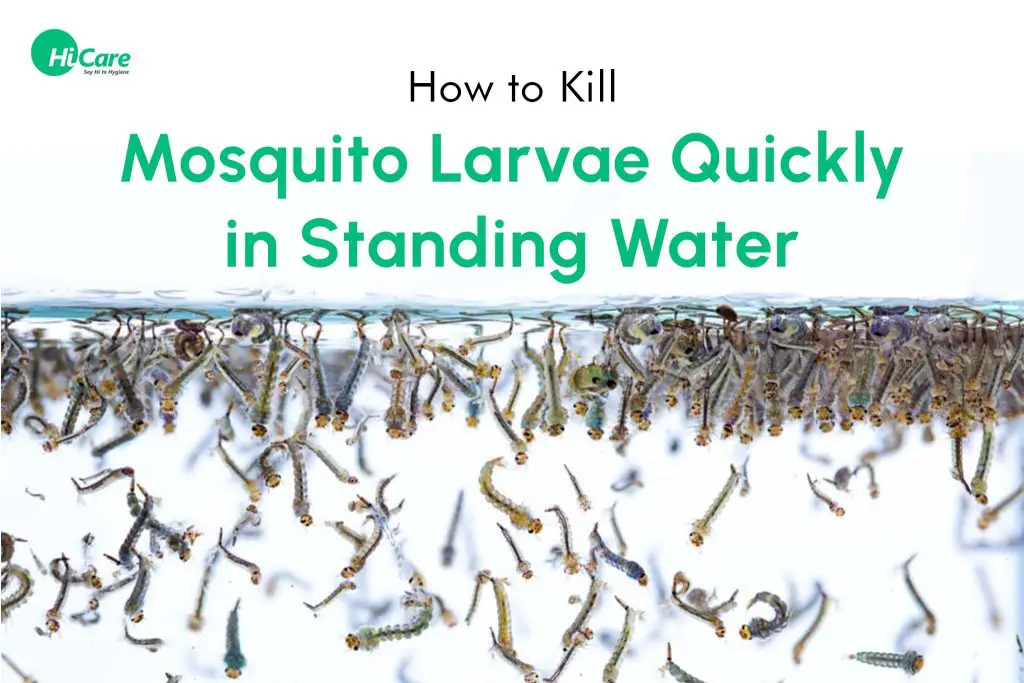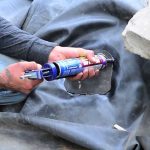Dealing with mosquito larvae in a pond can be a frustrating experience. Not only do they pose a nuisance, but they also present health risks due to the diseases they can carry. However, there are several effective methods to eliminate mosquito larvae from your pond and create a safer environment for you and your family. In this article, we will explore some practical ways to get rid of mosquito larvae in a pond.
1. Remove Standing Water
One of the most crucial steps in controlling mosquito larvae is to eliminate their breeding grounds. Mosquitoes lay their eggs in standing water, so by removing any stagnant water sources in and around your pond, you can significantly reduce the mosquito population. Make sure to check for any containers, gutters, or other areas where water may collect and empty them regularly.

Credit: todayshomeowner.com
2. Introduce Mosquito-Eating Fish
Another natural and effective way to control mosquito larvae in a pond is by introducing mosquito-eating fish such as gambusia or goldfish. These fish feed on mosquito larvae, helping to keep their population in check. Be sure to research the types of fish that are suitable for your pond and introduce them accordingly.
3. Use Biological Larvicides
Biological larvicides are environmentally friendly products that target mosquito larvae specifically. These larvicides contain natural bacteria that are toxic to mosquito larvae but safe for other aquatic life. By using biological larvicides according to the manufacturer’s instructions, you can effectively reduce the mosquito population in your pond.
4. Install a Pond Aerator
A pond aerator can help disrupt the water’s surface, making it less hospitable for mosquito larvae to thrive. By increasing oxygen levels in the water, a pond aerator can also promote the growth of beneficial bacteria that can naturally control mosquito larvae populations. Consider installing a pond aerator to improve water circulation and reduce mosquito breeding grounds.
5. Maintain Proper Water Quality
Proper water quality is essential for maintaining a healthy pond ecosystem and deterring mosquito larvae. Regularly test the water quality of your pond and make necessary adjustments to ensure that it is not conducive to mosquito breeding. Avoid overfeeding fish and minimize the use of fertilizers near the pond to prevent nutrient buildup that can attract mosquitoes.
6. Clean and Maintain the Pond Regularly
Regular maintenance of your pond is key to preventing mosquito larvae infestations. Remove any debris, fallen leaves, or organic matter from the pond regularly to eliminate potential breeding sites for mosquitoes. Additionally, trim vegetation around the pond to reduce shaded areas where mosquitoes can lay eggs.
7. Use Mosquito Dunks
Mosquito dunks are an effective and easy-to-use solution for controlling mosquito larvae in ponds. These dunks contain a biological larvicide that targets mosquito larvae specifically. Simply place the dunks in the water according to the instructions, and they will release a bacteria that is toxic to mosquito larvae while being safe for other aquatic life.
8. Implement Natural Predators
Introducing natural predators of mosquito larvae, such as dragonflies or water bugs, can help control the mosquito population in your pond. These predators feed on mosquito larvae, reducing their numbers naturally. Encourage the presence of natural predators by creating a diverse and balanced ecosystem in and around your pond.
9. Use Floating Row Covers
Floating row covers can be used to physically block adult mosquitoes from laying eggs in the water. By covering the surface of the pond with a floating row cover, you can prevent mosquitoes from accessing the water to breed. This method is particularly useful in areas with high mosquito populations or during peak breeding seasons.
10. Consult with a Professional
If you are dealing with a persistent mosquito larvae infestation in your pond, it may be beneficial to seek advice from a professional pest control expert. A professional can assess the situation and recommend targeted solutions to eliminate mosquito larvae effectively and prevent future infestations.

Credit: nurturing-nature.co.uk
Conclusion
By following these effective methods for getting rid of mosquito larvae in a pond, you can create a more enjoyable outdoor environment while reducing the risks associated with mosquito-borne diseases. Remember to combine multiple strategies for optimal results and maintain regular maintenance practices to keep your pond mosquito-free. With diligence and proper care, you can enjoy a healthy and thriving pond ecosystem free from mosquito larvae.





